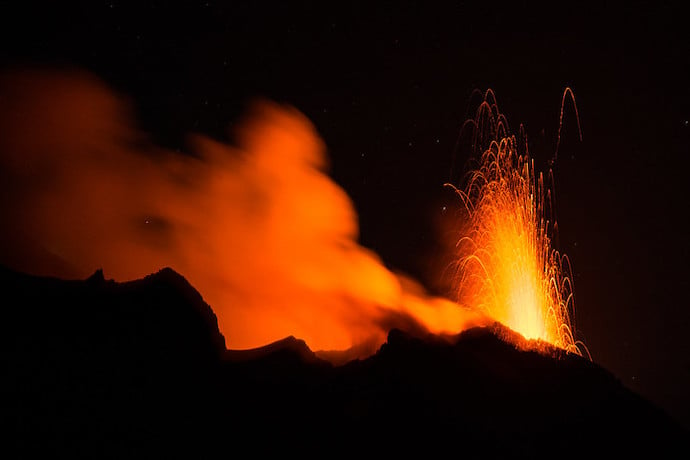Have you ever wondered where all the energy we use to power our homes comes from? Currently, it comes from burning fossil fuels like coal and oil, which are very harmful to our planet. But scientists and engineers have been coming up with many ways to take advantage of renewable energy sources that are more in harmony with the Earth.
Geothermal Power
One of the coolest natural phenomena in my opinion is the volcano, an amazing display of molten rock coming up to the earth’s surface at superheated temperatures. Places like Iceland are absolutely full of them.
Because of the natural abundance of geothermal energy from volcanic activity in the country, Icelanders have built one of the largest geothermal energy plants in the world. Called the Hellisheiði (pronounced het-lis-haythee), this power plant uses consistent and reliable heat from the volcanic activity underneath it in order to create tons of power. The Hellisheiði power plant alone creates enough electricity to power almost all of the homes in Iceland.
The one downside to Geothermal energy is an element released naturally by volcanoes, called sulfur (the same stuff you can find in Minecraft), which makes the entire area around the power plant smell like really bad eggs. Ew!
Tidal Power
Since 71% of the earth is covered in water, this next type of renewable energy is a pretty great idea. Tidal power uses the power of ocean tides to generate electricity. It does this through power-generating turbines that are placed in the water where there are strong tidal forces. As the water rises and falls naturally, this action spins the turbines to create electricity.
What is extra cool about this is that the moon’s gravitational pull heavily influences the tides of the ocean. This technically means that the driving force behind this type of renewable energy is the moon.
But regardless of what drives the flow of the tides, tidal power is highly reliable as tides come in and go out twice a day. One cool example of tidal power in action is the MeyGen Tidal Energy Project in Scotland. This project currently uses four underwater turbines that look like super-sized desk fans to generate electricity from the tidal flows of the Pentland Firth, an area known for its strong currents.
Biomass Power
Biomass power works by burning used or discarded organic products to create energy. Since Biomass power uses waste materials that would otherwise be discarded, it is considered more friendly to the environment than power plants that burn fossil fuels like coal.
One country that is embracing this technology in a cool way is Côte d’Ivoire (the Ivory Coast). Côte d’Ivoire is the world’s largest chocolate producer, which leaves them with a lot of leftover waste like cocoa husks and shells. In order to better use this waste, they are building the largest biopower plant in Africa. The project will hopefully be finished in 2023 and will power 1.4 million homes. Let’s hope this power plant smells a little better than the one in Iceland.
Renewable energy sources are crucial to the future of humans and the protection of the earth’s ecosystems. As scientists and engineers continue to explore and develop new renewable energy sources, we can reduce our reliance on fossil fuels, which are directly killing our planet.
Geothermal, tidal, and biomass are just a few examples of the many renewable energy sources becoming available to us. By harnessing the power of the earth’s natural processes, we are slowly coming closer to a more sustainable future for everyone.
Learn More
What is Renewable Energy?
https://www.alliantenergykids.com/renewableenergy/renewableenergyhome
Types of Renewable Energy
https://www.youtube.com/watch?v=Giek094C_l4
Renewable Energy for Kids
https://www.ducksters.com/science/environment/renewable_energy.php
Kids Earth
https://kids.earth.org/climate-change/renewable-energy-2/
Chocolate Power
https://www.meridiam.com/projects/biokala-biomass-plant-ivory-coast/

